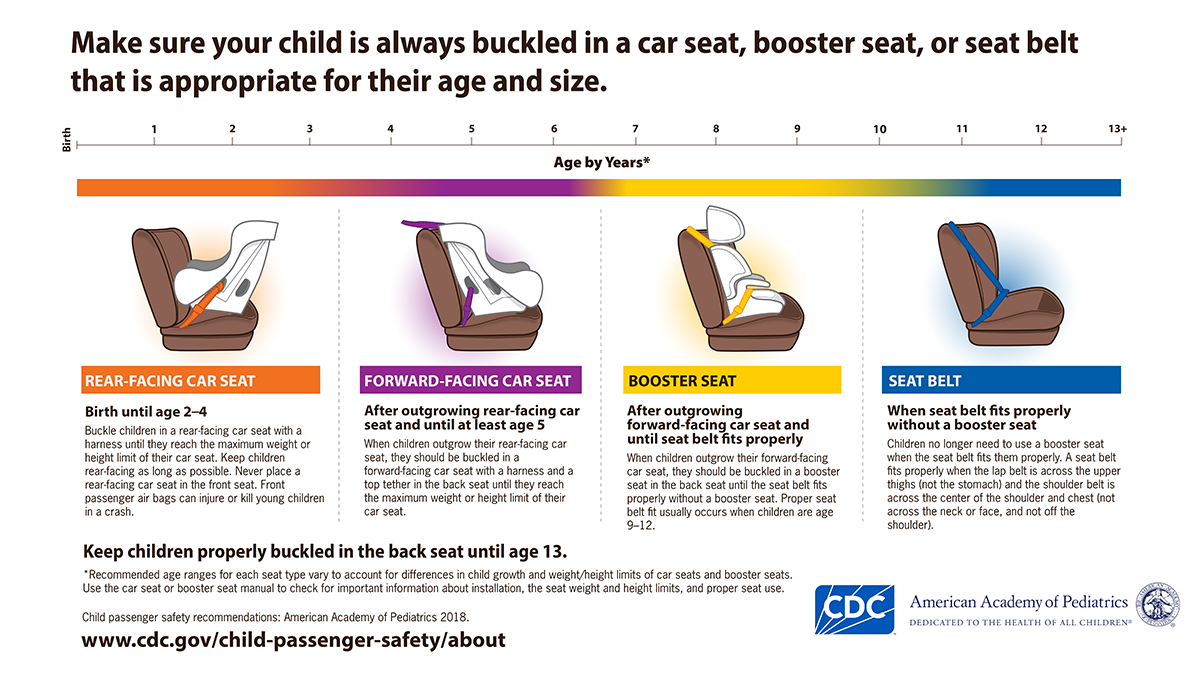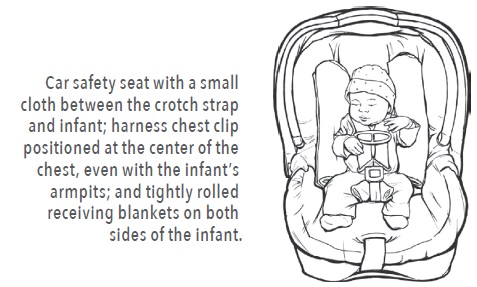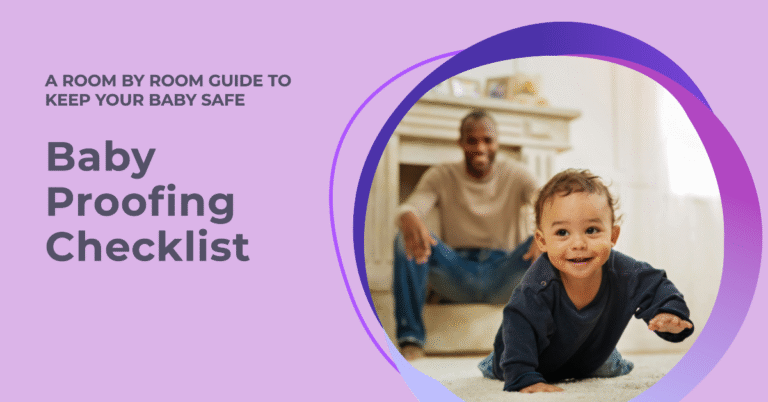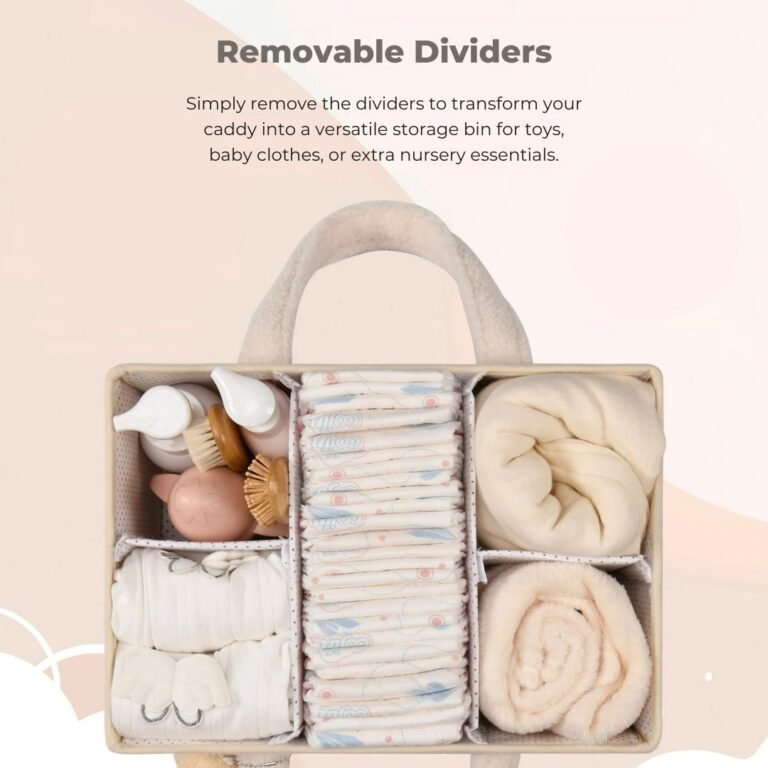Car Seat Safety Tips for New Parents: Essential Rules
As a new parent, ensuring the safety of your precious little one is your top priority. With so many car seat options and rules, it can feel overwhelming to know where to start.
But don’t worry, you’re not alone. You’ve come to the right place to discover essential car seat safety tips that can make all the difference. Imagine the peace of mind you’ll feel knowing your child is as safe as possible during every car ride.
This article will guide you through must-know rules and tips that are designed to keep your child secure and comfortable. Let’s dive in and get you equipped with the knowledge you need to protect your most valuable treasure.

Credit: www.facebook.com
Choosing The Right Car Seat
Choosing the right car seat is crucial for your baby’s safety. It ensures maximum protection during travel. With many options available, making the right choice might feel overwhelming. Understanding the types and features can simplify your decision.
Types Of Car Seats
Car seats come in various types. The three main categories are rear-facing, forward-facing, and booster seats. Rear-facing seats are for infants. They provide the best protection for a baby’s head and neck. Forward-facing seats suit toddlers. They feature a harness system for extra safety. Booster seats are for older children. They help position the seat belt correctly.
Age And Weight Considerations
Each car seat type fits a specific age and weight range. Rear-facing seats are ideal for infants up to 2 years. Some models support up to 35 pounds. Forward-facing seats usually suit ages 2 to 4. They can handle weights from 20 to 65 pounds. Booster seats are for children over 4 years. They are suitable until the child reaches about 80 pounds. Always check the car seat manual for guidelines.
Safety Certifications
Look for safety certifications when buying a car seat. Certified seats meet government standards. The JPMA and NHTSA offer reliable certifications. They ensure the seat has passed crash tests. This gives peace of mind about its safety features. Check for a certification label on the seat. It confirms compliance with safety regulations.
Proper Installation Techniques
Ensuring the car seat is installed correctly keeps your baby safe during travels. Always follow the manual’s instructions for a secure fit. Double-check the seatbelt or latch system for tightness, preventing any unwanted movement.
Ensuring your child’s safety in the car starts with proper car seat installation. It’s not just about buckling them in; it involves understanding the nuances of your car seat and your vehicle. Many new parents feel overwhelmed, but with a few essential techniques, you can ensure your child’s car seat is safely installed. Let’s dive into some practical tips that will give you confidence and peace of mind.Reading The Manual
Your first step is to thoroughly read both the car seat and vehicle manuals. The car seat manual will provide specific instructions and safety guidelines tailored to your model. Meanwhile, your vehicle’s manual will show the best places to install the seat. These manuals are your best friends in setting up a secure seat. Never assume you know it all; each car seat and vehicle can have unique installation requirements.Using Seat Belts Vs. Latch System
Do you know whether to use the seat belt or the LATCH system? Each has its benefits and can be equally safe when used correctly. The LATCH system is often easier for new parents because it offers clear attachment points. However, if your child exceeds the weight limit for LATCH, you should switch to the seat belt method. Always check your car seat’s guidelines for weight restrictions and recommendations.Ensuring A Tight Fit
A secure car seat fit is crucial for your child’s safety. Once installed, the car seat should not move more than an inch side to side or front to back. You might find it helpful to put some weight on the seat as you tighten the straps—perhaps even using your knee. When my friend first installed her car seat, she was surprised at how much tighter it needed to be. She realized that a snug fit is not just a recommendation but a must for safety. Have you checked if your car seat is snug and secure? Take a moment now to test the tightness and adjust as needed. These small actions make a significant difference in ensuring your child’s safety on every journey.Securing Your Child Correctly
Ensure your child’s safety with these essential car seat tips for new parents. Choose the right seat for their age and weight. Install it securely, following the manual closely. Keep harnesses snug and chest clips at armpit level. Regularly check seat condition and adjust as your child grows.
Securing your child correctly in their car seat is crucial for their safety. You may have the perfect car seat, but if it’s not properly adjusted, it won’t offer the protection your child needs. As a new parent, you might find this overwhelming, but with a few simple steps, you can ensure your child is secure and comfortable every time you hit the road. Let’s dive into some essential tips.Adjusting Harness Height
The harness height is a critical aspect of car seat safety. For rear-facing seats, the harness straps should be at or below your child’s shoulders. Imagine the straps as a gentle embrace that keeps your little one safe and snug. As your child grows, you’ll need to adjust the straps to ensure they remain in the correct position. Many parents overlook this, thinking it’s a one-time setup. But as your child grows, you need to keep an eye on this. How often do you check if the harness height is still right?Harness Tightness Check
A loose harness is a common mistake and can compromise safety. You should perform a simple test: pinch the strap at your child’s shoulder. If you can pinch any fabric, the harness is too loose. It should be snug but comfortable, like a hug that doesn’t squeeze. Some parents might worry about being too tight, but a properly tightened harness is essential. Remember, a snug harness keeps your child secure, while a loose one could lead to injury during sudden stops or accidents.Chest Clip Positioning
The chest clip is often misunderstood and misused. It should be positioned at armpit level, not at the belly or neck. Think of it as a key lock that keeps the harness in place, ensuring your child is securely fastened. Surprisingly, many parents place it too low, thinking it’s more comfortable. But this positioning can affect how the harness performs in a crash. Have you checked your chest clip today? It might seem minor, but its proper placement is vital for your child’s safety. By focusing on these aspects, you can drive with peace of mind, knowing your child is safely secured. Each trip offers a chance to double-check these settings, ensuring your little one’s protection.Common Mistakes To Avoid
Ensuring your child’s safety in the car is vital. Many new parents unknowingly make mistakes with car seats. These errors can compromise safety. Understanding and avoiding these common mistakes is crucial.
Loose Installation
A car seat must be tightly secured. A loose installation can be dangerous. The seat should not move more than an inch side-to-side. Use your knee to push down while tightening the seatbelt. Always double-check the tightness.
Incorrect Harness Position
The harness must be at the right height. For rear-facing seats, straps should be below the shoulders. Forward-facing seats need straps above the shoulders. A snug harness prevents movement. Ensure the chest clip is at armpit level.
Using Expired Car Seats
Car seats have expiration dates. Materials degrade over time. Check the label for the expiration date. An expired seat may not protect in a crash. Always use a seat within its valid lifespan.
Traveling Safely With Infants
Ensure your infant’s safety with essential car seat tips. Choose the right seat based on weight and age. Install it securely, avoiding loose straps. Always place the seat in the back, away from airbags. Regularly check for wear and tear to maintain safety.
Traveling with your infant for the first time can be both exciting and nerve-wracking. As a new parent, you want to ensure that every car ride is as safe as possible. Understanding the basics of car seat safety is crucial, as it provides peace of mind that your little one is protected during every journey. Let’s delve into essential tips that guarantee your baby’s safety, starting with facing the rear.Facing The Rear
Always position your infant car seat to face the rear of the vehicle. Rear-facing seats offer the best protection for your child’s head, neck, and spine in the event of a collision. Experts recommend keeping your child in this position until they reach the maximum height or weight limit specified by the car seat manufacturer. When my daughter was born, I was adamant about following these guidelines despite the temptation to switch to a forward-facing seat early. Each time we hit the road, I felt reassured knowing she was in the safest position possible. Are you confident your child’s seat is correctly positioned?Avoiding Bulky Clothing
Bulky clothing can interfere with the car seat harness, preventing it from fitting snugly. During colder months, dress your baby in thin layers and use blankets over the harness for warmth. This ensures the straps are tight against your child’s body, keeping them secure in the seat. I learned the hard way when a friend pointed out my son’s puffy jacket was causing his straps to be too loose. A quick adjustment made a world of difference, and I felt more assured knowing he was properly strapped in. Have you checked your child’s harness recently?Keeping The Back Seat Safe
The back seat is the safest spot for children under 13. Ensure the car seat is installed in the middle of the back seat, away from active airbags. Regularly inspect your car seat’s installation, as even the best seats can become loose over time. During our road trips, I make it a habit to check the seat’s placement before we set off. It’s a small step that significantly boosts my confidence in our travel safety. Have you considered how a quick check might enhance your peace of mind? Remember, every safety measure you take brings you one step closer to a worry-free journey. Your attention to these details is a testament to your dedication as a parent. What other steps do you take to ensure your infant’s car safety?
Credit: www.cdc.gov
Maintaining Car Seat Safety
New parents should know essential car seat safety rules to protect their little ones on the road. Always choose the right seat for your child’s age and weight. Ensure the seat is properly installed and harnessed for maximum safety.
As a new parent, ensuring your baby’s car seat is safe is paramount. But beyond the initial setup, maintaining car seat safety involves ongoing attention and care. Let’s delve into some essential tips that will help you keep your child’s car seat in top condition.Regular Inspections
Regular checks can prevent potential hazards. Make it a habit to inspect the car seat for any signs of wear and tear. Check the harness, buckles, and fabric for any damage. Ensure the seat is securely installed by giving it a firm shake. If it moves more than an inch side to side or front to back, it might need tightening. Refer to the car seat manual to ensure everything is in its correct position. This simple routine can save lives.Cleaning And Care Tips
Keeping the car seat clean is not just about aesthetics; it’s about safety too. Dirt and debris can clog the buckles, affecting their function. Use a gentle soap and water solution to clean the seat. Avoid harsh chemicals that can degrade the material. Always let the seat air dry to prevent mold. Remember, a clean car seat is a safe car seat.When To Transition To The Next Seat
Your child’s growth will dictate when it’s time to move to the next car seat stage. Check the weight and height limits of your current seat. Once your child exceeds these limits, it’s time for an upgrade. Transitioning too early or too late can compromise safety. Does your child’s head reach the top edge of the seat? If so, it might be time to consider the next size up. Remember, maintaining your car seat isn’t just about following rules—it’s about protecting your most precious cargo. How often do you review your car seat safety practices? Making it a part of your routine can make all the difference.Resources For New Parents
Ensure your child’s safety with essential car seat tips. Choose the right seat for your child’s age and size. Always check installation instructions to secure the seat correctly.
Navigating the world of car seat safety can feel overwhelming for new parents. With so much information and advice available, it’s crucial to find trustworthy resources to ensure your child’s safety on the road. Whether you need help with installation, want to read more about car seat safety, or seek support from other parents, there are plenty of resources at your fingertips.Where To Find Installation Help
Getting the car seat installation right is essential. You can often find free installation help at local fire stations or police departments. These professionals are trained to ensure your car seat is installed correctly, providing peace of mind. Many hospitals also offer installation assistance as part of their maternity services. Consider checking with your hospital about available resources. Additionally, car seat manufacturers usually have helplines or instructional videos on their websites, guiding you step-by-step through the process.Recommended Reading
Books and online articles can offer detailed insights into car seat safety. The American Academy of Pediatrics provides guidelines on their website, which is a reliable source for the latest recommendations. Parenting magazines often feature articles on car seat safety, offering practical tips and advice. Libraries and bookstores are also great places to find books on child safety, written by experts in the field.Online Communities And Support
Joining online communities can be incredibly beneficial. Platforms like Facebook and Reddit have groups where parents share experiences and advice on car seat safety. Engaging in these communities can provide you with real-world insights and tips that you might not find elsewhere. Websites like BabyCenter and What to Expect have forums dedicated to car seat discussions. These platforms can be a great place to ask questions and learn from others’ experiences. Have you ever considered how comforting it is to know that you’re not alone in this journey? Remember, the right resources can make a significant difference in keeping your child safe. Explore these options, and don’t hesitate to reach out for help when you need it.
Credit: www.healthychildren.org
Frequently Asked Questions
What Is The Best Car Seat For Newborns?
Choosing the right car seat is crucial for newborn safety. Look for a seat that meets safety standards, is easy to install, and fits your car. An infant car seat with a rear-facing position is recommended for newborns. Always check the expiration date and manufacturer guidelines.
How Do I Install A Car Seat Correctly?
Proper installation is key to car seat safety. Follow the manufacturer’s instructions carefully. Ensure the seat is secure by using the LATCH system or seat belt. The car seat should not move more than an inch when tugged. Always double-check the angle and harness adjustment.
When Should I Move My Child To A Forward-facing Seat?
Transition to a forward-facing seat when your child outgrows the rear-facing seat. Typically, this happens when they reach the seat’s height or weight limit, usually around age two. Always refer to the manufacturer’s guidelines for specific weight and height requirements.
How Tight Should The Car Seat Harness Be?
The harness should be snug but comfortable. You shouldn’t be able to pinch any slack in the harness strap at the shoulder. The chest clip should be at armpit level to ensure maximum safety. Adjust the harness as your child grows to maintain a proper fit.
Conclusion
Safety matters most with car seats for your little ones. Follow these tips to protect them. Check seat installation often. Ensure straps are snug and secure. Choose the right seat for your child’s age and weight. Replace the seat after an accident.
Read the manual carefully. Your child’s safety depends on it. Always stay informed about new safety updates. Simple steps make a big difference. Keep your child safe on every trip. Car seat safety is not hard but essential. Protecting your child is a priority.
Stay vigilant and drive safely.





